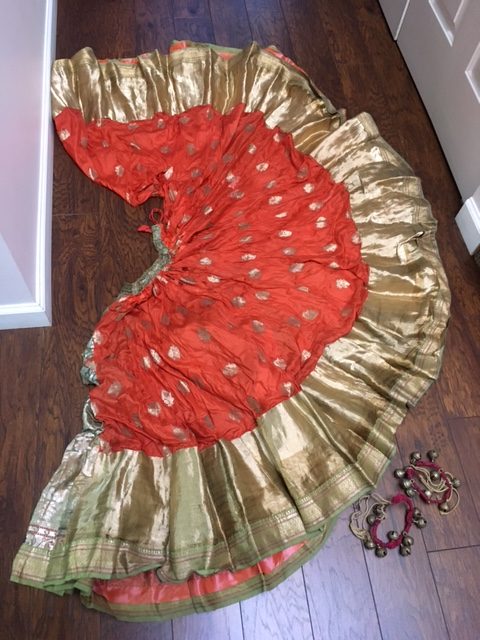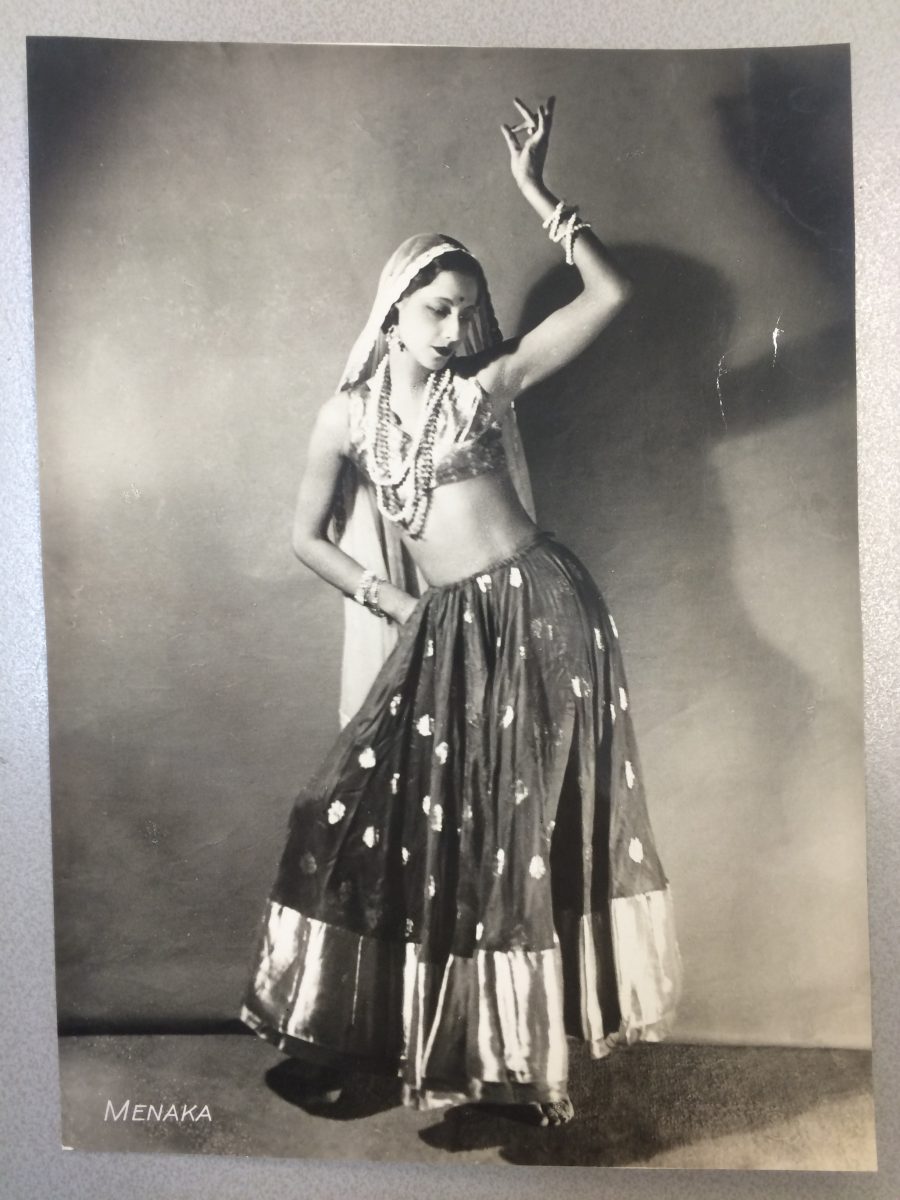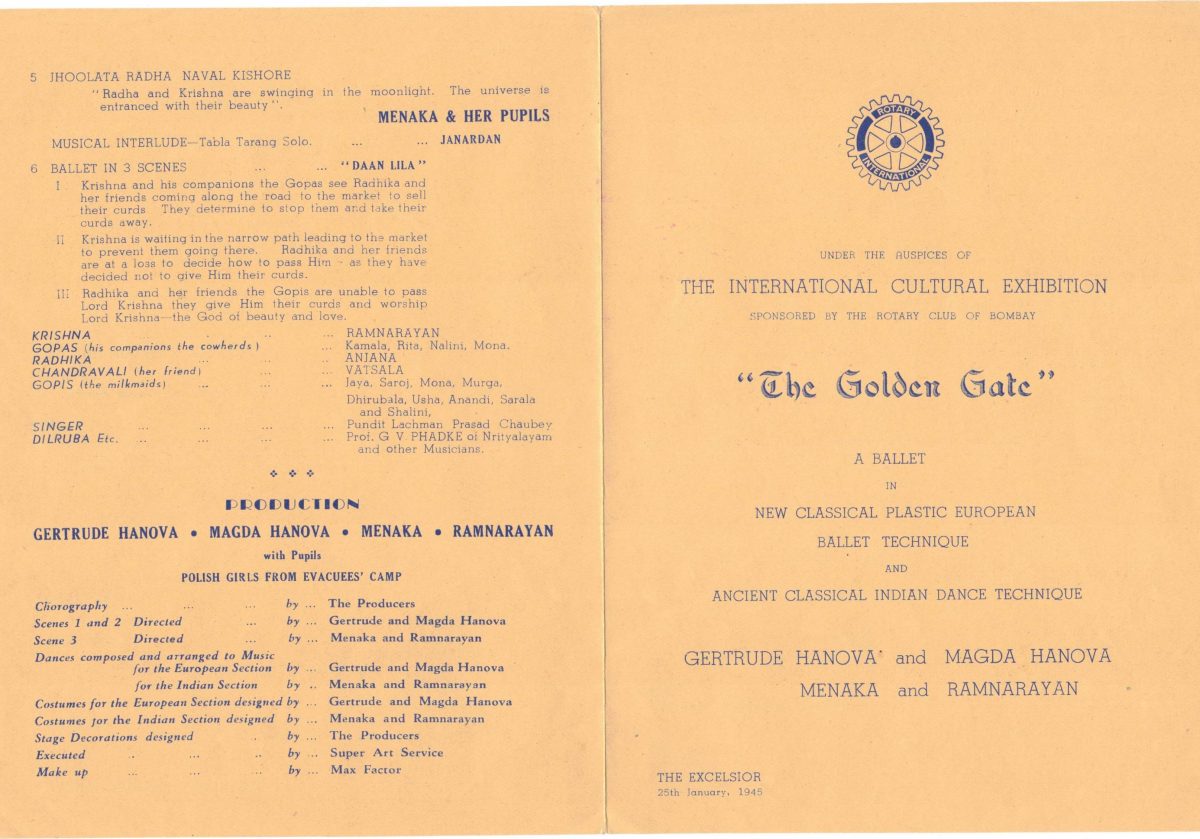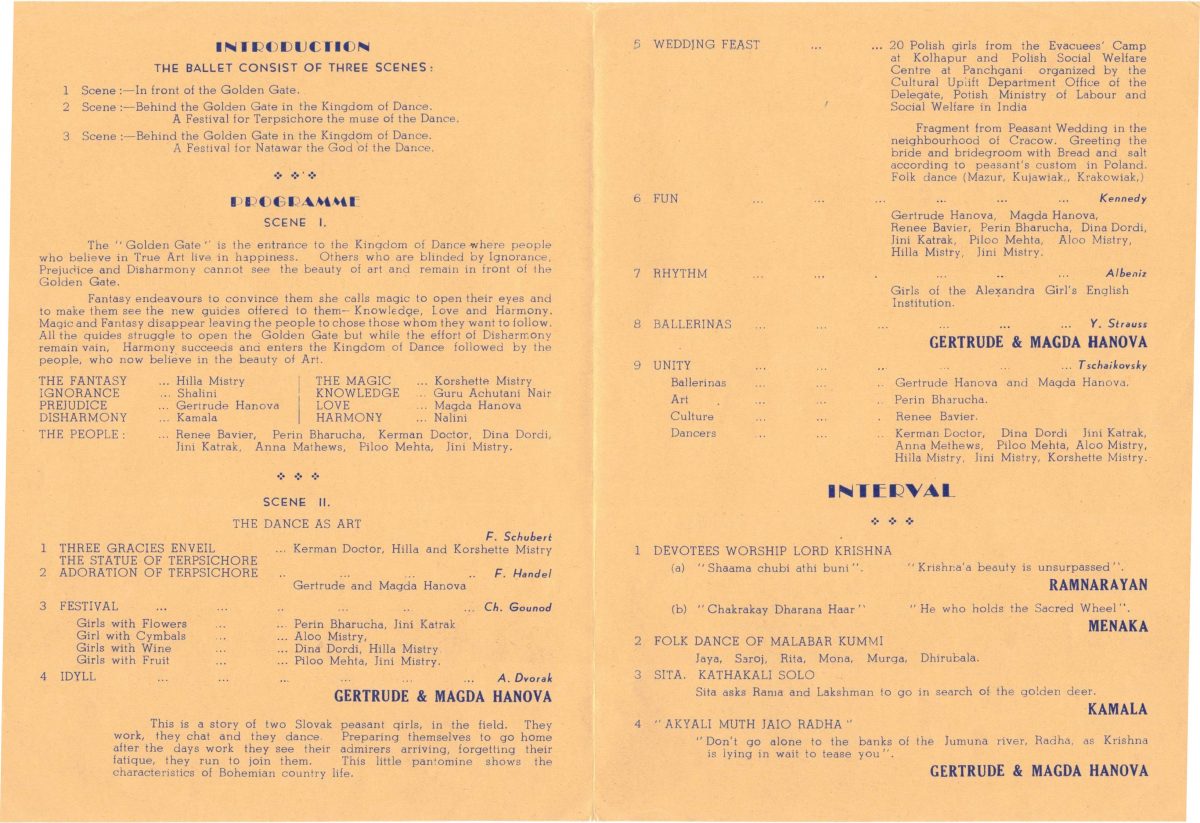Little is known about Menaka’s work after her return from Europe. We know that she was creatively active for about 10 years until her much too early death in early 1947. Since a planned further tour of Europe and the USA was not possible due to the turmoil of war, she toured India and South Asia with her group. Back in Bombay, she opened her school and created new dance productions about which, unfortunately, little is known. A lucky coincidence completed this picture and brought a lot of new sources into the Menaka archive. We met for an interview with Karen McKinlay Kurnaedy. She is a teacher, researcher, dancer, and dance educator. She has a PhD in Arts Education from Simon Fraser University and her research focuses on phenomenological investigations of bodily perceptions generated while dancing, dance and spirituality. She has recently published a new book about her dance teachers, Magda and Gertrud Hanova. Karin shared with us her teachers’ encounter with India and their love for the dance, which reflects the changing history of the 20th century.
In her new book Our Love Affair with Dance, she tells the life stories of the two dancers and enriches them with numerous photographs and other archive material. The sisters, women of Jewish origin from today’s Karlovy Vary, had studied dance at the most important European institutions and ran a successful school in their hometown. In the 1930s thy fled Europe just in time with their husbands and father. They escaped repression, expropriation and violent death and found a new home in Bombay, a thriving colonial metropolis. There they continued to teach dance and worked also for many years in dance with Menaka, with whom they shared a close and deep friendship.
After Menaka’s death and the partition of India, they set out from Bombay and eventually reached Vancouver in Canada. There they opened a dance school that flourished for decades with their unique style. In their suitcases, between beautiful costumes and props from India there was also Menaka’s orange silk skirt that she had worn in many performances and her ankle bells.




